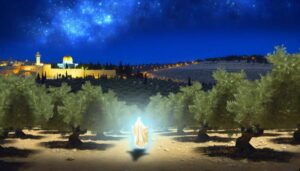Radiance Meaning in the Bible: Divine Light Explained
In the Bible, radiance frequently symbolizes divine presence and revelation, echoing God’s omnipotence and transcendent purity. It is often depicted as light, representing knowledge, holiness, and spiritual illumination.
Key events, such as Moses’ face shining after encountering God (Exodus 34:29-35) and Jesus’ transfiguration (Matthew 17:1-9), utilize radiant imagery to reveal divine authority and truth. Theologically, radiance contrasts spiritual darkness with divine enlightenment, reinforcing themes of redemption and hope.
To fully grasp radiance’s profound biblical significance, further examination of relevant scriptural events and prophecies is essential.

Radiance Meaning in the Bible: Symbol of God’s Glory, Presence, and Purity
| Aspect | Details |
|---|---|
| Definition | Brightness or shining light, often associated with divine presence |
| Biblical References | Hebrews 1:3, Exodus 34:29–30, Psalm 34:5 |
| Symbolism | Reflects God’s glory, holiness, and the spiritual light that shines through believers |
| Used for Christ | Jesus is described as the “radiance of God’s glory” (Hebrews 1:3) |
| Spiritual Lesson | Calls believers to reflect God’s light and live in His glorious presence |
Divine Light in Genesis

How does the concept of divine light manifest in the opening chapters of Genesis, where God declares, ‘Let there be light,’ consequently setting the foundation for the biblical understanding of radiance as both a physical and spiritual phenomenon?
This proclamation marks the creation of light, separating it from darkness and establishing order within the cosmos (Genesis 1:3-4).
Theologically, this act underscores light as a symbol of divine presence and revelation. It signifies the inauguration of creation, reflecting God’s omnipotence and the inherent goodness of light.
Contextually, light serves as a metaphor for knowledge, purity, and divine truth, permeating subsequent scriptural narratives.
Therefore, Genesis establishes light not merely as a physical entity but as a profound emblem of spiritual illumination.
Moses and the Burning Bush
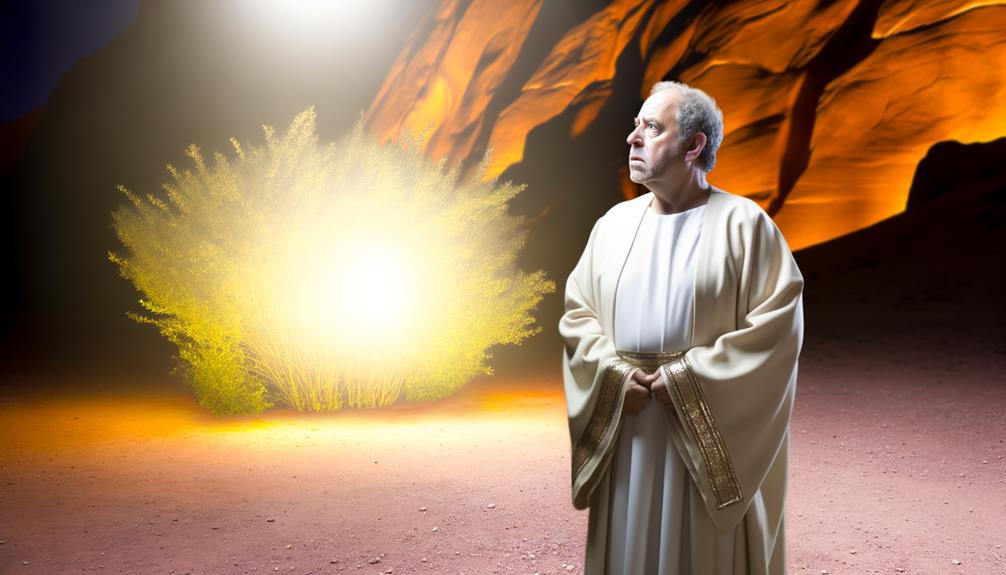
Building upon the foundational theme of divine illumination in Genesis, the encounter between Moses and the burning bush further exemplifies the profound symbolism of radiance as a manifestation of God’s presence and call to revelation (Exodus 3:1-6).
The burning bush, aflame yet unconsumed, symbolizes several key theological concepts:
- Divine Presence: The unburnt bush signifies God’s perpetual and unending nature.
- Holy Ground: The command for Moses to remove his sandals indicates the sanctity of the encounter.
- Revelation: God’s self-identification as ‘I AM’ reveals His eternal existence.
- Mission: Moses is commissioned to lead Israel out of Egypt, marking divine radiance as a guide.
This event encapsulates radiance as both a literal and metaphorical beacon of God’s intervention and purpose.
Radiance of the Tabernacle

The radiance of the Tabernacle, as described in Exodus, serves as a tangible manifestation of God’s presence among the Israelites, symbolizing divine guidance and sanctity.
This radiance, often referred to as the Shekinah glory, filled the Tabernacle, underscoring God’s dwelling among His people. Theologically, it represented the covenant relationship and divine favor, while contextually it provided reassurance and direction during their wilderness sojourn.
The luminosity emanating from the Tabernacle was not merely physical light but a profound symbol of God’s holiness and omnipotence. It demarcated sacred space, turning the Tabernacle into a focal point of worship and communion with God.
This radiance consequently fortified the Israelites’ faith and affirmed God’s unceasing guardianship.
God’s Glory on Mount Sinai

God’s glory on Mount Sinai, as vividly depicted in the book of Exodus, symbolizes a pivotal moment of divine revelation and covenant establishment between God and the Israelites. This theophany is characterized by overwhelming radiance and manifest power, marking God’s tangible presence.
Theological analysis reveals several key aspects:
- Divine Authority: God’s presence on Sinai affirmed His supreme authority over Israel.
- Covenant Establishment: The giving of the Ten Commandments represented a formal, binding covenant.
- Manifestation of Holiness: The radiance indicated God’s purity and separateness from sin.
- Mediator Role: Moses acted as the intermediary, emphasizing the need for a mediator between God and humanity.
These elements underscore the significance of Sinai in biblical theology and the enduring impact of God’s revealed glory.
The Shining Face of Moses
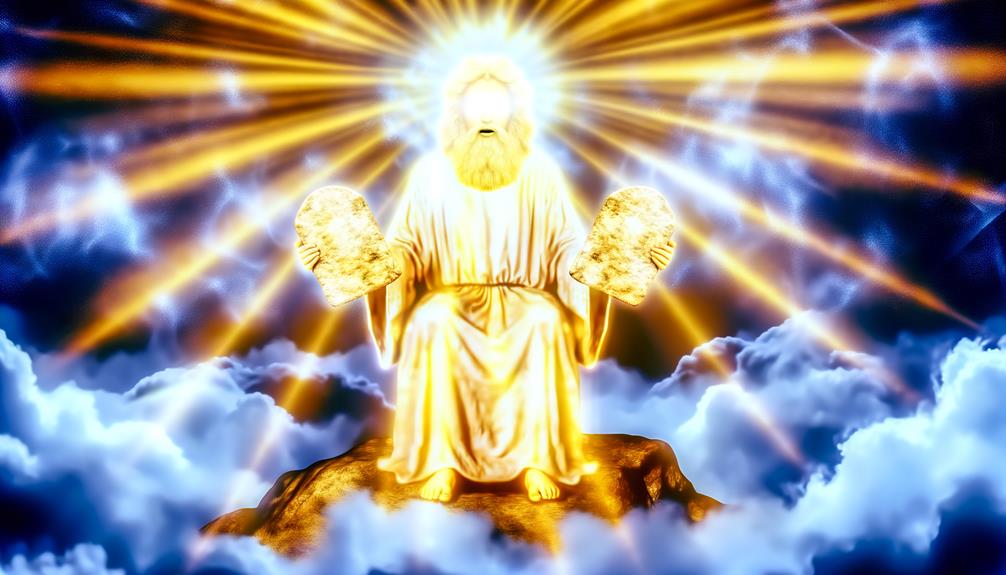
Following the theophany on Mount Sinai, the radiance of divine revelation was further manifested in the shining face of Moses as he descended with the tablets of the covenant. This phenomenon, detailed in Exodus 34:29-35, symbolized the transference of divine glory to a human intermediary.
Theologically, Moses’ radiant face signified his intimate encounter with God and the impartation of divine knowledge to the Israelites. Contextually, this radiance served as a visible authentication of Moses’ authority and the divine origin of the commandments.
His glowing visage, requiring a veil among the people, underscored the transformative power of divine presence and revelation. This phenomenon bridged the chasm between the divine and human domains, reinforcing the covenantal relationship established at Sinai.
Radiant Visions of Ezekiel
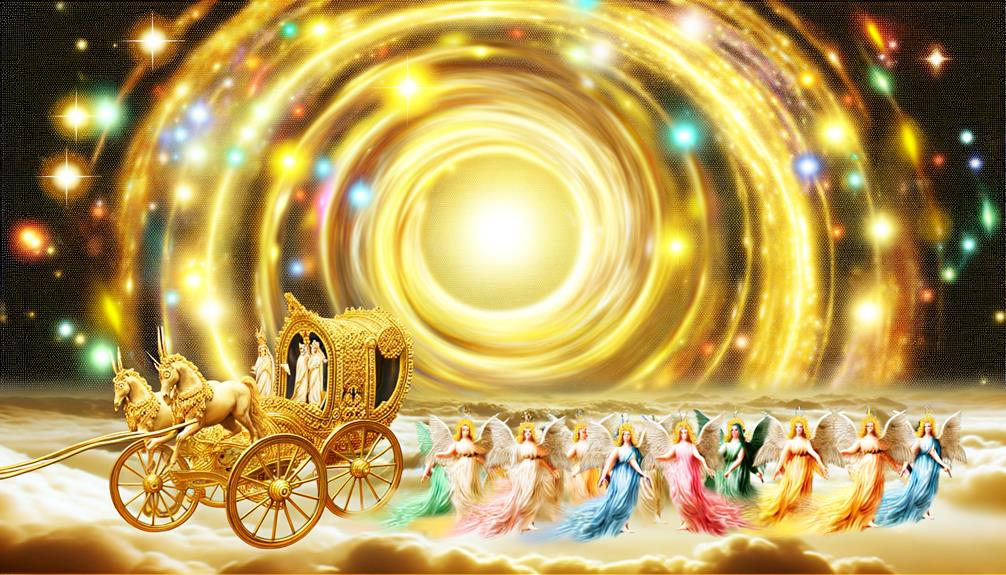
Ezekiel’s visions, replete with radiant imagery, serve as profound theological symbols that convey divine majesty and eschatological hope. These visions, documented in the book of Ezekiel, highlight the transcendent nature of God’s glory through vivid, symbolic depictions.
The radiance in Ezekiel’s visions can be analyzed through several key elements:
- The Four Living Creatures: Symbolizing divine presence and angelic beings, they are described as glowing with fire and lightning.
- The Wheels within Wheels: These convey God’s omnipresence and are depicted with gleaming, intersecting wheels.
- The Radiant Throne: God’s throne is described as shining with sapphire and surrounded by a rainbow-like radiance.
- The Glory of the Lord: Often depicted as a brilliant light, symbolizing God’s holiness and judgment.
These elements collectively underscore the theological theme of divine glory and future restoration.
Jesus’ Transfiguration
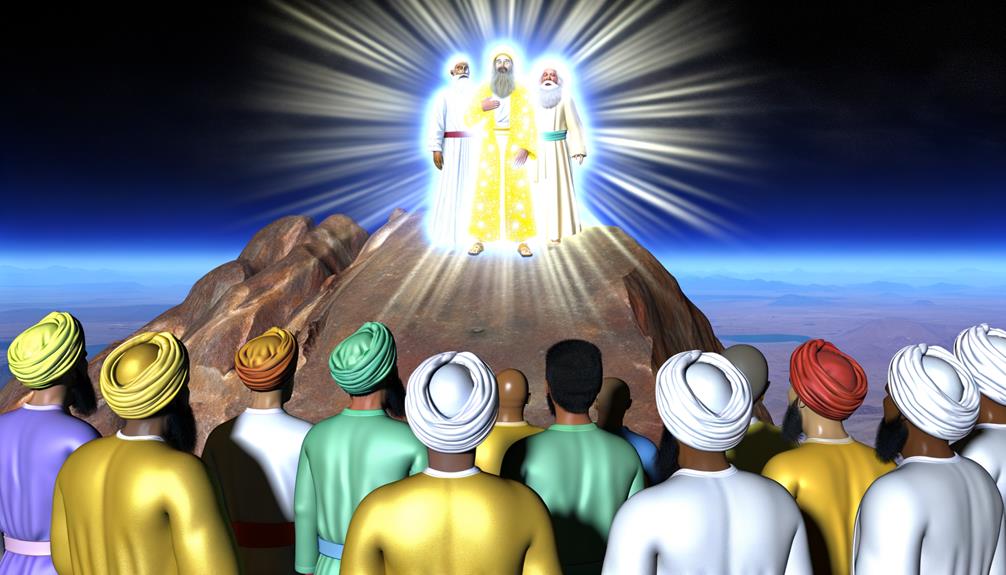
The event of Jesus’ Transfiguration, recorded in the Synoptic Gospels, serves as a pivotal moment that reveals His divine nature and prefigures His future glory.
This manifestation of radiance, where Jesus’ face shone like the sun and His garments became dazzlingly white, signifies a theophany—a direct revelation of God. The presence of Moses and Elijah alongside Him underscores the fulfillment of the Law and the Prophets.
The voice from the cloud, declaring, ‘This is my Son, whom I love; with him I am well pleased,’ affirms Jesus’ divine sonship.
Theologically, the Transfiguration highlights the intersection of the divine and human in Christ, offering a foretaste of the eschatological glory promised to believers, thereby deepening the understanding of His messianic mission.
Radiance in the Psalms

Throughout the Psalms, the theme of radiance frequently symbolizes God’s glory, presence, and favor, providing theological insight into the divine-human relationship. This imagery is utilized to convey several theological truths:
- Manifestation of Divine Glory: Psalms like Psalm 19:1 (‘The heavens declare the glory of God’) highlight how creation reflects God’s radiant majesty.
- Divine Presence: Psalm 27:1 (‘The Lord is my light and my salvation’) emphasizes God’s illuminating presence in the believer’s life.
- Guidance and Wisdom: Psalm 119:105 (‘Your word is a lamp to my feet and a light to my path’) suggests that divine radiance offers direction and understanding.
- Favor and Blessing: Psalm 31:16 (‘Make your face shine upon your servant’) indicates God’s favor manifested as radiant blessing upon the faithful.
These aspects collectively illustrate how radiance is intricately linked to God’s interaction with humanity in the Psalms.
Light in the Prophecies

Prophetic literature in the Bible often employs the metaphor of light to signify divine revelation, hope, and the promise of salvation amidst prevailing darkness.
Isaiah 9:2 epitomizes this theme: ‘The people walking in darkness have seen a great light.’ This verse not only anticipates the coming of the Messiah but also conveys the transformative power of divine intervention.
Similarly, Malachi 4:2 speaks of the ‘Sun of Righteousness‘ rising with healing, illustrating light as a harbinger of restoration and divine justice.
In these contexts, light transcends its physical properties, embodying a theological symbol of God’s presence and redemptive action, illuminating the path from despair to divine fulfillment.
Consequently, light in prophecy encapsulates profound eschatological significance.
Revelations of Heavenly Light
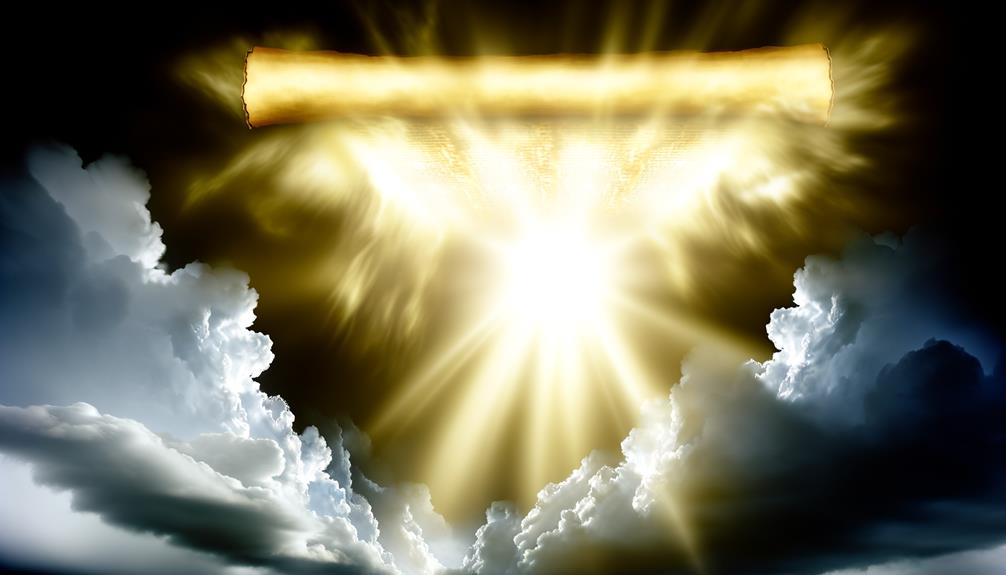
In biblical narratives, heavenly light often serves as a direct manifestation of God’s presence and glory, offering profound theological insights into divine-human encounters. Such revelations are pivotal in understanding the nature of divine communication.
Notable instances include:
- The Transfiguration of Jesus: This event, described in the Synoptic Gospels, reveals Christ’s divine nature through a radiant transformation.
- Paul’s Damascus Road Experience: Here, a blinding heavenly light signifies Saul’s conversion and subsequent mission as Paul.
- Moses on Mount Sinai: Encountering God, Moses’ face radiates light, symbolizing divine impartation.
- The New Jerusalem: Revelation speaks of an eternal city illuminated by God’s glory, eliminating the need for the sun or moon.
These instances highlight how heavenly light conveys divine presence and purpose.
Conclusion
The concept of radiance in the Bible serves as an overwhelming demonstration to the divine presence and glory. From the creation light in Genesis to the apocalyptic visions in Revelation, the radiance underscores God’s transcendental majesty.
The luminous episodes involving Moses, the Tabernacle, and Jesus’ Transfiguration highlight the awe-inspiring nature of God’s interaction with humanity.
Through prophetic and poetic scriptures, this divine brilliance perpetually illuminates the theological narrative, encapsulating an ineffable grandeur that transcends human comprehension. This illumination invites believers to engage deeply with sacred texts, fostering a profound connection to the divine. By exploring divine purpose in scripture, seekers can uncover layers of meaning and insight that speak to the heart of their faith journey. Ultimately, this sacred exploration not only enhances spiritual understanding but also nurtures a transformative relationship with the Creator.





